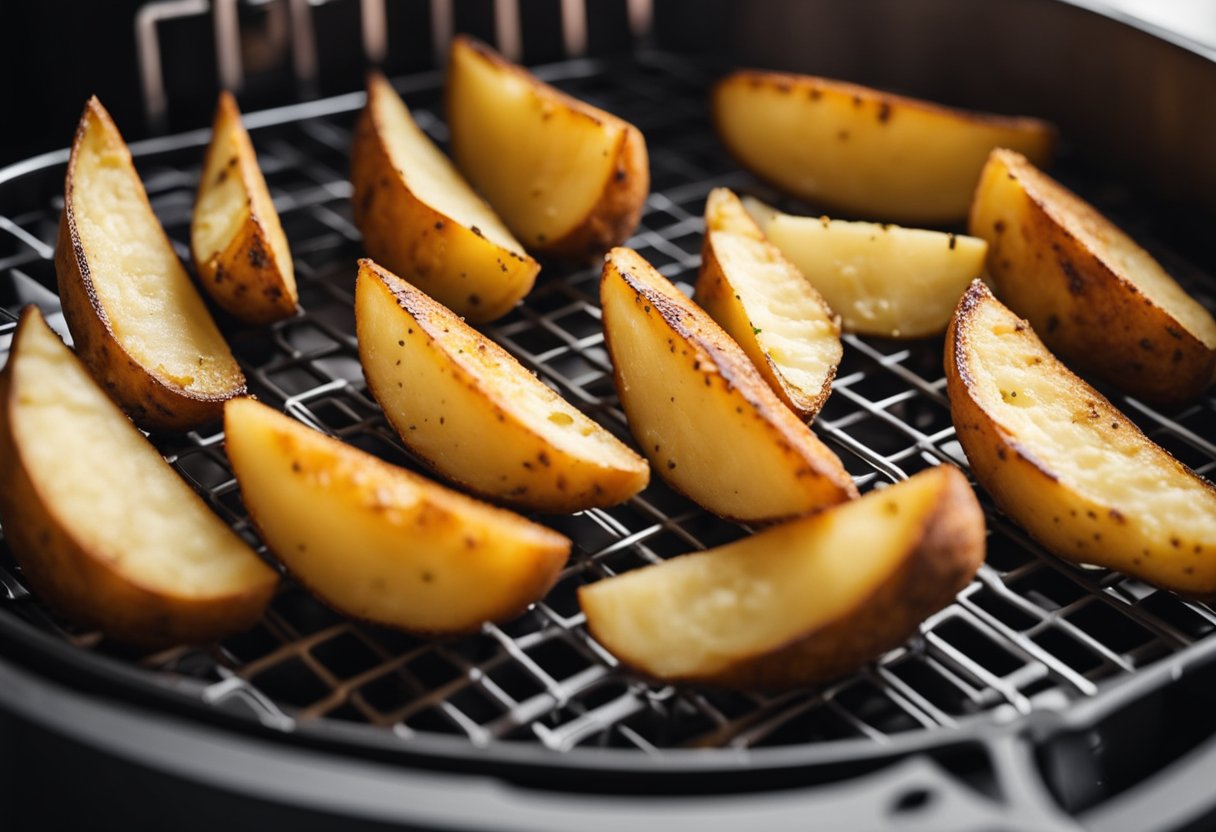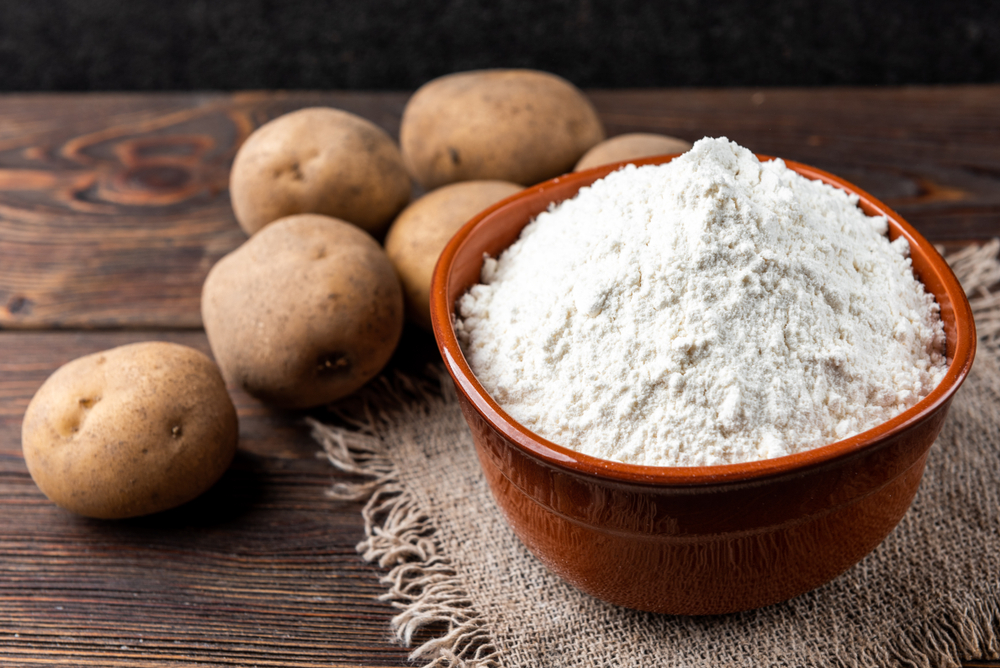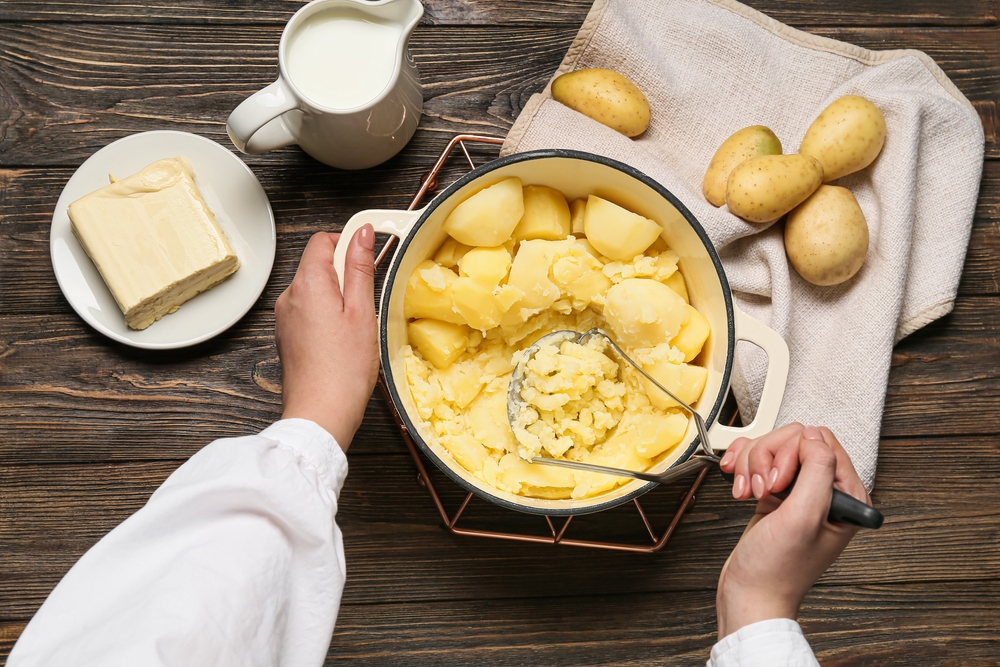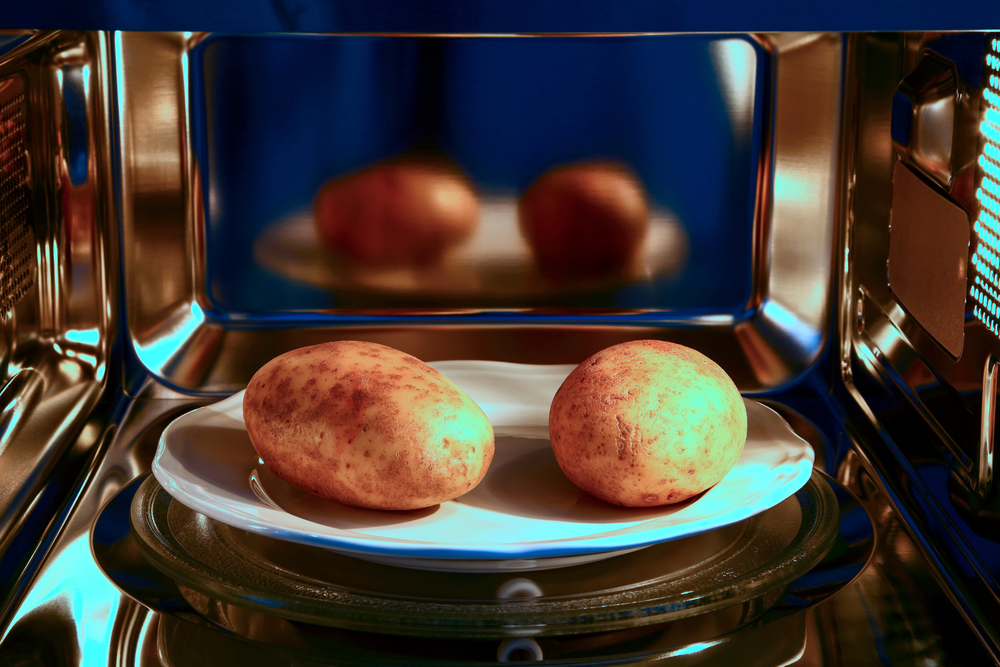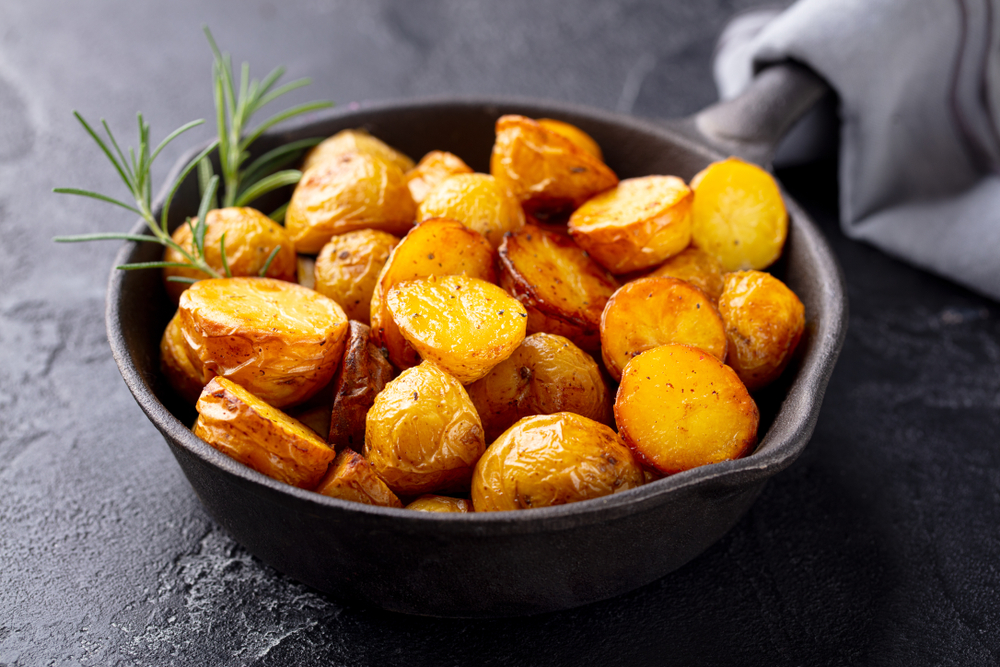Sweet potatoes are a delicious and nutritious vegetable that can be enjoyed in a variety of ways. From roasted sweet potato wedges to mashed sweet potatoes, there are countless ways to prepare this versatile ingredient.
However, what happens when you have too many sweet potatoes and can’t eat them all before they go bad? Freezing sweet potatoes is a great way to preserve this vegetable for later use.
Before freezing sweet potatoes, it’s important to understand how to properly prepare them. Scrub the sweet potatoes clean and poke them with a fork before baking them in the oven until tender.
Alternatively, sweet potatoes can be boiled until they are soft. Once cooked, the sweet potatoes can be mashed, cubed, or sliced into wedges before being frozen. When ready to use, thaw the frozen sweet potatoes and reheat them in the oven or microwave.
Key Takeaways
- Sweet potatoes can be frozen for later use.
- To freeze sweet potatoes, cook them first and then mash, cube, or slice them before freezing.
- Thaw frozen sweet potatoes and reheat them in the oven or microwave before using.
Understanding Sweet Potatoes

Nutritional Benefits
Sweet potatoes are a highly nutritious vegetable that is low in calories and high in fiber. They are also rich in vitamins and minerals, including vitamin A, vitamin C, and potassium.
The fiber in sweet potatoes helps to regulate digestion and maintain healthy blood sugar levels. They are also a good source of antioxidants, which can help to protect the body against disease.
Varieties and Uses
There are many varieties of sweet potatoes, each with its own unique flavor and texture. Some of the most popular varieties include the Beauregard, Garnet, and Jewel. Sweet potatoes are a versatile vegetable that can be used in a variety of dishes.
They can be roasted, mashed, boiled, or baked, and used as a side dish, salad, or in sweet potato fries. They can also be used in sweet dishes such as sweet potato casserole, sweet potato pie, and desserts like muffins, cookies, and puddings. Candied sweet potatoes are a popular side dish during the holidays.
Sweet potatoes are an easy side dish that can be prepared in a variety of ways. They are a great addition to any meal and can be used in a variety of side dishes. They are also a healthy alternative to traditional French fries and can be used to make delicious sweet potato fries.
Sweet potatoes are a versatile vegetable that can be used in a variety of dishes, making them a great addition to any kitchen.
Preparing Sweet Potatoes for Freezing
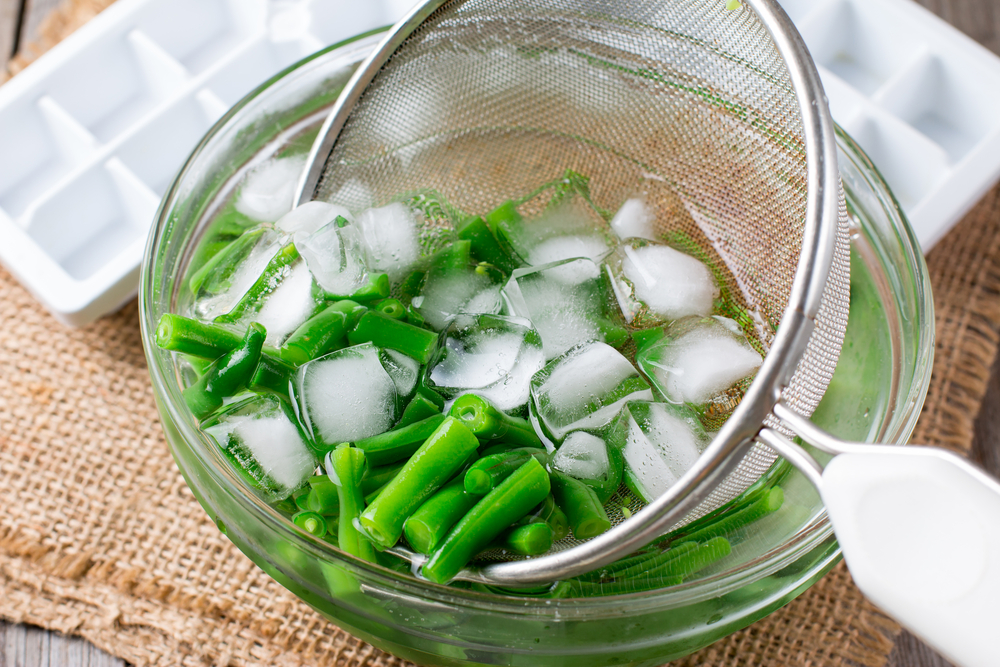
Freezing sweet potatoes is a great way to preserve their flavor and nutritional value for future use. When preparing sweet potatoes for freezing, there are several steps that need to be taken to ensure that they freeze properly and taste great when they are thawed.
Washing and Peeling
The first step in preparing sweet potatoes for freezing is to wash and peel them. Scrub the sweet potatoes thoroughly to remove any dirt or debris. If you prefer to leave the skin on, make sure to wash them well.
Cutting and Slicing
Next, cut the sweet potatoes into chunks, slices, or wedges. The size of the pieces will depend on how you plan to use them later.
Boiling and Baking
Boiling or baking sweet potatoes before freezing them can help to preserve their flavor and texture. Boiling sweet potatoes is a quick and easy way to cook them.
Simply place the sweet potato pieces in a pot of boiling water and cook until tender. Baking sweet potatoes can also be a great option. Preheat your oven to 375°F, place the sweet potato pieces on a baking sheet, and bake for about 1 to 1 1/2 hours, or until tender.
Blanching Process
Blanching sweet potatoes can help to preserve their color and texture. To blanch sweet potatoes, bring a pot of water to a boil and add the sweet potato pieces.
Let them cook for about 2-3 minutes, then remove them from the boiling water and immediately place them in a large bowl of ice water to stop the cooking process.
Cooling and Drying
After boiling, baking, or blanching, it is important to cool the sweet potato pieces before freezing them. Place them on a baking sheet and let them cool to room temperature.
Once cooled, dry the sweet potato pieces thoroughly with a paper towel or kitchen towel to remove any excess moisture.
Packing and Wrapping
When packing sweet potato pieces for freezing, it is important to remove as much air as possible from the packaging to prevent freezer burn. Place the sweet potato pieces in a freezer-safe bag or container and press out any excess air.
You can also wrap them in aluminum foil, parchment paper, or plastic wrap before placing them in the freezer. Be sure to label the package with the date and contents.
By following these steps, you can freeze sweet potatoes and enjoy them for months to come.
Freezing Sweet Potatoes
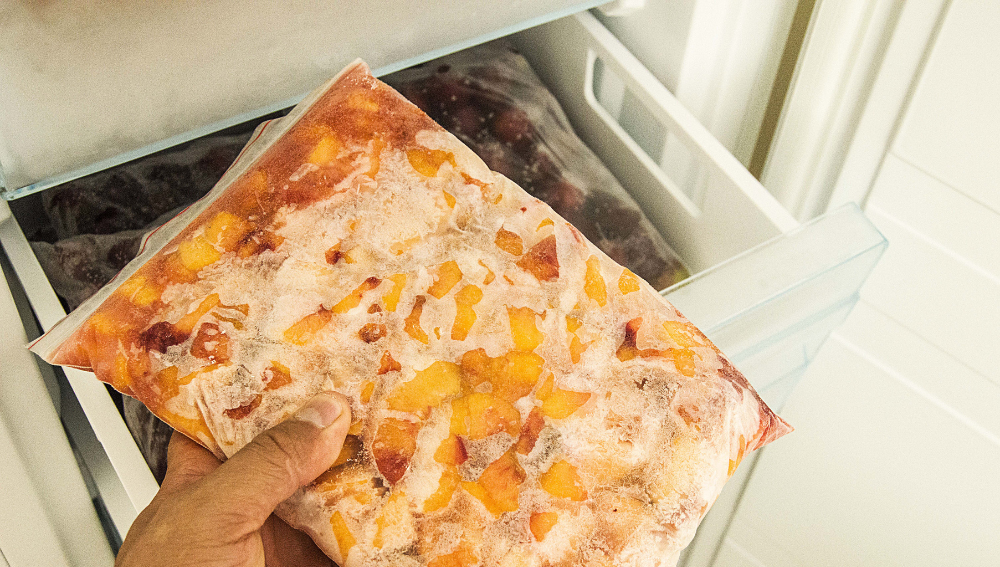
Methods of Freezing
There are several methods to freeze sweet potatoes. One of the most common methods is to cook the sweet potatoes first before freezing them.
This ensures that the sweet potatoes maintain their texture and taste. Here are some methods of freezing sweet potatoes:
Freezing Cubed or Wedged Sweet Potatoes
- Peel and cut sweet potatoes into cubes or wedges.
- Blanch the sweet potatoes in boiling water for 2-3 minutes.
- Drain the sweet potatoes and let them cool.
- Place the sweet potatoes in an airtight container or freezer bag. Label with the date and contents.
- Place the container or bag in the freezer.
Freezing Sweet Potato Fries
- Peel and cut sweet potatoes into fries.
- Blanch the fries in boiling water for 2-3 minutes.
- Drain the fries and let them cool.
- Place the fries in an airtight container or freezer bag. Label with the date and contents.
- Place the container or bag in the freezer.
Freezing Mashed Sweet Potatoes
- Cook sweet potatoes until soft.
- Mash the sweet potatoes with a fork or potato masher.
- Add a tablespoon of lemon juice to prevent browning.
- Let the mashed sweet potatoes cool.
- Place the mashed sweet potatoes in an airtight container or freezer bag. Label with the date and contents.
- Place the container or bag in the freezer.
Storing in Freezer
When storing sweet potatoes in the freezer, it is important to use airtight containers or freezer bags. This helps prevent freezer burn, rot, and mold.
Label the container or bag with the date and contents. It is also important to store the sweet potatoes in the freezer at 0°F or below.
Preventing Spoilage
To prevent spoilage, it is important to blanch sweet potatoes before freezing them. This helps preserve their color, texture, and taste. It is also important to use airtight containers or freezer bags to prevent freezer burn, rot, and mold.
Adding lemon juice to mashed sweet potatoes can help prevent browning. When thawing sweet potatoes, it is best to thaw them in the refrigerator or microwave.
Thawing and Reheating Sweet Potatoes
Thawing Process
When it comes to thawing frozen sweet potatoes, there are a few methods to choose from. One option is to place them in the fridge overnight.
This method can take up to 24 hours, so it requires some planning ahead. Another option is to place the frozen sweet potatoes in a bowl of cold water for a few hours. This method is quicker than the fridge method but requires more attention to ensure the water stays cold.
Reheating Methods
After thawing, there are several ways to reheat sweet potatoes. One popular method is to use the oven. Preheat the oven to 400F (200C) and place the sweet potatoes on a baking sheet. Reheat for 10 to 15 minutes, or until heated through.
Another option is to use an air fryer. Set the air fryer to 350F (180C) and reheat for about 12 minutes. It is not necessary to thaw the sweet potatoes before reheating them in the oven or air fryer.
Maintaining Texture and Flavor
To maintain the texture and flavor of the sweet potatoes, it is important to avoid overcooking them during reheating. Overcooked sweet potatoes can become mushy and lose their smooth texture.
Additionally, overcooking can cause the sweet potatoes to lose their savory flavor. To avoid this, it is recommended to check the sweet potatoes frequently during reheating and adjust the cooking time as needed.
Overall, thawing and reheating sweet potatoes is a simple process that can be done with a few basic tools and some attention to detail. By following these tips, it is possible to maintain the texture and flavor of the sweet potatoes and enjoy them as a delicious side dish or snack.
Using Frozen Sweet Potatoes

Sweet potatoes can be frozen for later use in a variety of recipes, including mashed sweet potatoes, sweet potato fries, and even sweet potato desserts.
Here are some tips on how to incorporate frozen sweet potatoes into your favorite dishes.
Incorporating in Recipes
Frozen sweet potatoes can be used in a variety of recipes, such as stews, casseroles, and gratins. To use frozen sweet potatoes in these dishes, simply thaw them in the refrigerator overnight and incorporate them into your recipe as you would fresh sweet potatoes.
Making Mashed Sweet Potatoes
Frozen mashed sweet potatoes are a great addition to any meal, and they’re easy to make. To freeze mashed sweet potatoes, simply prepare your recipe as usual, let it cool, and then transfer it to an airtight container. Freeze for up to three months.
To reheat, thaw the sweet potatoes in the refrigerator overnight and then reheat them in the microwave or on the stove.
Preparing Sweet Potato Fries
Frozen sweet potato fries are a delicious and easy side dish. To freeze sweet potato fries, simply cut them into the desired shape, blanch them in boiling water for two minutes, and then transfer them to a baking sheet and freeze for two hours.
Once frozen, transfer the fries to an airtight container and freeze for up to three months. To cook, simply bake the fries in the oven until crispy.
Baking Sweet Potato Desserts
Frozen sweet potatoes can also be used in a variety of sweet potato desserts, such as sweet potato pie, biscuits, muffins, cookies, and even candied sweet potatoes. To freeze sweet potatoes for baking, simply bake them in the oven until tender, let them cool, and then transfer them to an airtight container.
Freeze for up to three months. To use in your recipe, thaw the sweet potatoes in the refrigerator overnight and then incorporate them as you would fresh sweet potatoes.
Overall, freezing sweet potatoes is a great way to preserve them for later use in a variety of recipes. By following these simple tips, you can easily incorporate frozen sweet potatoes into your favorite dishes and enjoy their delicious flavor year-round.
Conclusion
Freezing sweet potatoes is a great way to preserve them for later use. Whether you want to freeze them raw or cooked, there are a few things to keep in mind to ensure the best results.
When freezing raw sweet potatoes, it is important to peel and chop them into uniform pieces before freezing them on a baking sheet in a single layer.
Once frozen, transfer them to a freezer-safe bag. This method allows you to easily portion out the sweet potatoes when you are ready to use them.
If you prefer to cook your sweet potatoes before freezing them, roasting or baking them is a great option. This will help preserve their texture and taste, and make them easier to use in recipes later on. Be sure to let them cool completely before freezing them in a freezer-safe bag or container.
Blanching sweet potatoes before freezing them can help preserve their flavor and texture, preventing color and textural changes caused by enzymatic activity.
This involves briefly boiling the sweet potatoes before freezing them. Be sure to cool them down quickly in ice water to stop the cooking process.
Overall, freezing sweet potatoes is a simple and convenient way to enjoy them all year round. Just be sure to follow these tips to ensure the best results.
Related post: Can You Freeze Rhubarb
Frequently Asked Questions
What are some sweet potato recipes that freeze well?
Sweet potatoes are versatile and can be used in a variety of recipes that freeze well. Some popular options include sweet potato fries, mashed sweet potatoes, sweet potato casseroles, and sweet potato pies.
Can you freeze cooked sweet potatoes in their skin?
Yes, you can freeze cooked sweet potatoes in their skin. However, it is recommended to remove the skin before freezing for the best texture and flavor.
How do you freeze sweet potato fries?
To freeze sweet potato fries, first, cut them into desired size and shape. Then, blanch them in boiling water for 3-4 minutes and immediately transfer to an ice bath to stop the cooking process.
Once cooled, pat dry and place in a single layer on a baking sheet lined with parchment paper. Freeze for 1-2 hours, then transfer to an airtight container or freezer bag.
Can you freeze mashed sweet potatoes?
Yes, you can freeze mashed sweet potatoes. To do so, first, allow the mashed sweet potatoes to cool completely. Then, transfer to an airtight container or freezer bag, leaving some room for expansion. Label and date the container, and store in the freezer for up to 6 months.
What is the best way to freeze sweet potatoes?
The best way to freeze sweet potatoes depends on the recipe and desired texture. For whole sweet potatoes, it is recommended to blanch them first before freezing. For mashed sweet potatoes, allow them to cool completely before freezing.
For fries, blanch and freeze in a single layer before transferring to an airtight container or freezer bag.
What are the benefits of freezing sweet potatoes?
Freezing sweet potatoes allows for meal prep and easy access to a nutritious and versatile ingredient. It also helps to reduce waste and save time in the kitchen.


